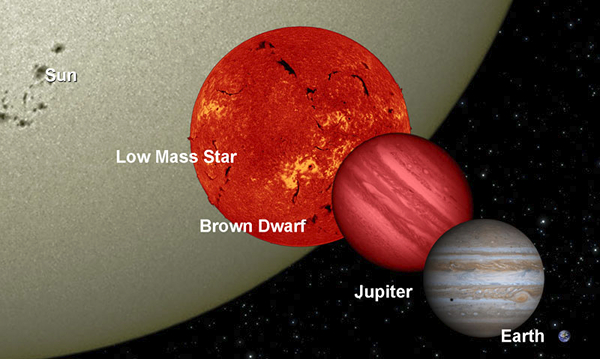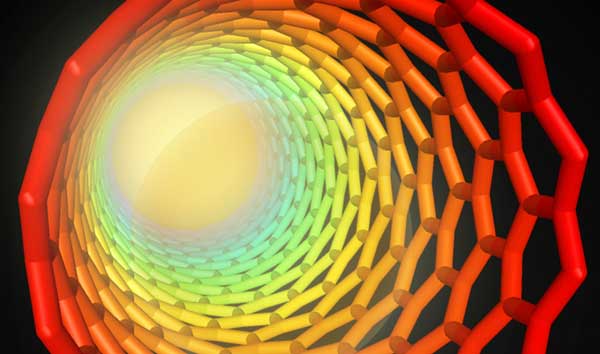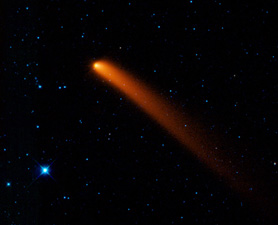
© NASASize comparison of our Sun, a low mass star, a brown dwarf, Jupiter, and Earth. Stars with less mass than the Sun are smaller and cooler, and hence much fainter in visible light. Brown dwarfs have less than eight percent of the mass of the Sun, which is not enough to sustain the fusion reaction that keeps the Sun hot. These cool orbs are nearly impossible to see in visible light, but stand out when viewed in infrared. Their diameters are about the same as Jupiter's, but they can have up to 80 times more mass and are thought to have planetary systems of their own.
A dark object may be lurking near our solar system, occasionally kicking comets in our direction.
Nicknamed "Nemesis" or "The Death Star," this undetected object could be a red or brown dwarf star, or an even darker presence several times the mass of Jupiter.
Why do scientists think something could be hidden beyond the edge of our solar system? Originally, Nemesis was suggested as a way to explain a cycle of mass extinctions on Earth.
The paleontologists David Raup and Jack Sepkoski claim that, over the last 250 million years, life on Earth has faced extinction in a 26-million-year cycle. Astronomers proposed comet impacts as a possible cause for these catastrophes.
Our solar system is surrounded by a vast collection of icy bodies called the Oort Cloud. If our Sun were part of a binary system in which two gravitationally-bound stars orbit a common center of mass, this interaction could disturb the Oort Cloud on a periodic basis, sending comets whizzing towards us.







